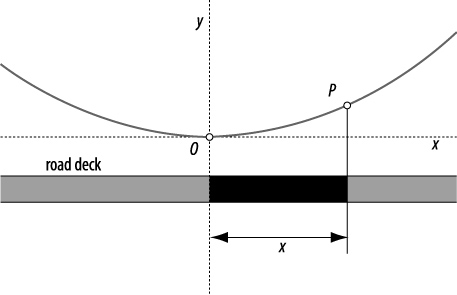Japan
027
Akashi-Kaikyo Bridge, Kobe, Japan
The World’s Longest Suspension Bridge
There are suspension bridges all over the world, from the Clifton Suspension Bridge in Bristol, UK, to the Golden Gate Bridge in San Francisco, California. But only one can be the longest, and that honor goes to the Akashi-Kaikyō Bridge in Japan, which links the city of Kobe on the main Japanese island of Honshu with Awaji Island across the Inland Sea. The bridge was built to cross a dangerous waterway that had previously been plied by ferries and was the site of tragic sinkings in stormy weather.
The Akashi-Kaikyō Bridge has a main span of 1991 meters (by contrast, the main span of the Clifton Suspension Bridge is 214 meters, and that of the Golden Gate Bridge is 1,280 meters). The original plan was for a main span of 1,990 meters, but in 1995, after the main pillars were built but before the bridge was installed, a large earthquake hit the Kobe area and moved the pillars apart by an extra meter. Overall, the bridge is 3,911 meters long.
To help prevent swaying (especially in an earthquake), the bridge has pendulums inside the towers that act to dampen any movement (more on damping via pendulums in Chapter 34).
Avoiding corrosion is an important concern because of the salty air. The main cables consist of multiple cables bunched together, and dry air is pumped into the interior spaces to prevent any buildup of moisture. Painting the steel structure is also vital, and is achieved using a robot that can paint 500 square meters per day. Underwater portions of the bridge are protected from corrosion using sacrificial anodes (see pages 316–317).
As with other modern bridges (see, for example, Chapter 14), the Akashi-Kaikyō Bridge has extensive monitoring systems, with multiple anemometers measuring wind speed at the top of the towers and at the deck level. The exact position of the bridge is monitored using GPS, and accelerometers measure the movement of the towers and the anchors.
Visitors can, of course, drive over the bridge after paying the toll. But to get a real sense of its scale and construction, it’s best to visit the Bridge Science Museum on the Kobe side of the bridge. There’s a small park from which the bridge can be observed, and a tunnel that takes visitors underneath the bridge and out across the water to a glass-floored observation area.
It’s also worth seeing the bridge at night, when it’s illuminated in a pattern of ever-changing colors.
Practical Information
The Bridge Science Museum is situated on the Kobe side of the Akashi-Kaikyō Bridge, a short walk from the JR Maiko station. There is some information in English, but you might consider arranging for an interpreter to understand all the displays. The Japanese National Tourist Office has information about visiting the bridge at http://www.jnto.go.jp/eng/location/sit/hyogo/2821.html.




